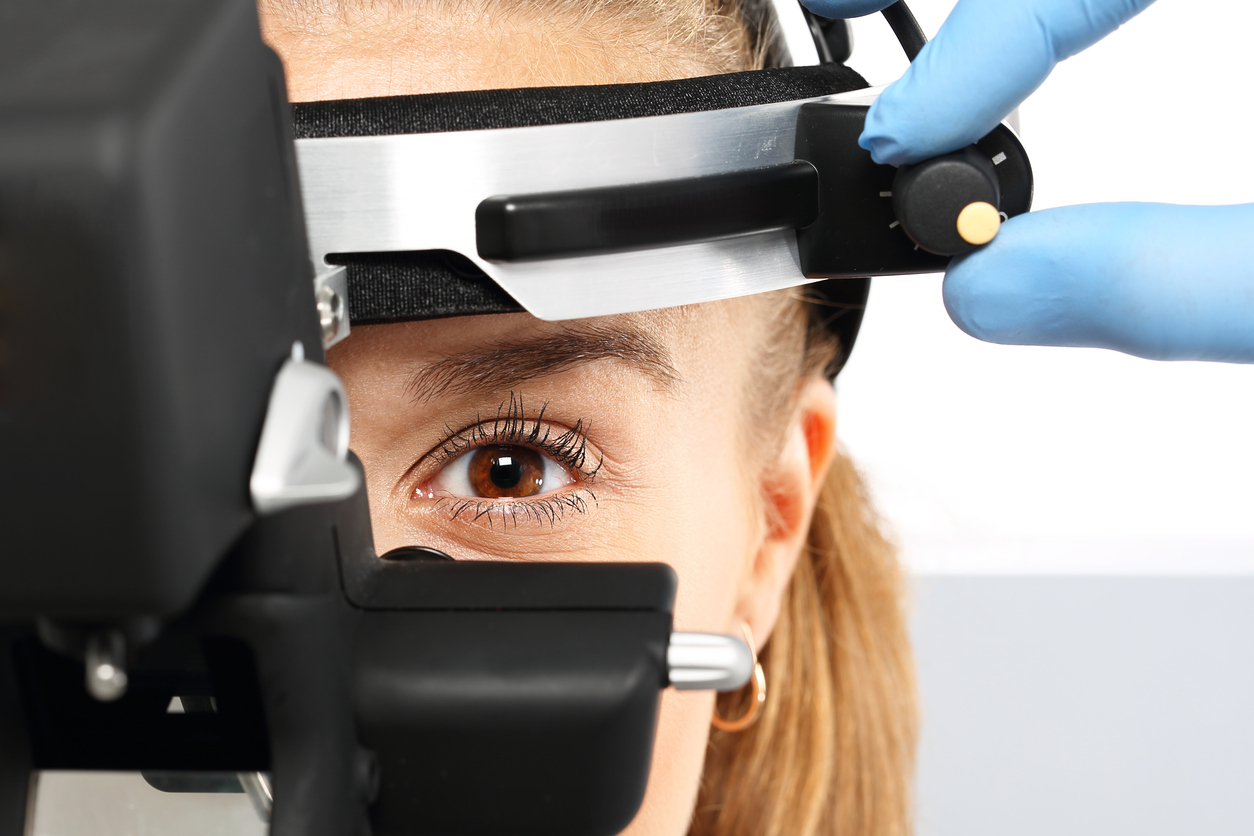After an eye exam your doctor will know whether your vision will respond well to LASIK in Orange County. Conditions caused by refractive error – which is characterized by the shape of the eye not allowing light to focus on the retina, causing images to appear blurred – are the ones that respond well to LASIK. However, severe refractive errors don’t respond as well as lower-level conditions. If this is the case for you, talk to your doctor about alternatives such as the ICL Implantable Contact Lens.
What are the Risks?
It is normal to have blurriness, light sensitivity, tearing and mild discomfort right after surgery. It is possible that one of your eyes could heal faster than the other. Dry eye syndrome is common after LASIK due to decreased tear production. Your eye doctor may recommend lubricating eye drops or other solutions to assist with dry eye symptoms. Infections or complications are rare, but possible. Ask Dr. Ghosheh to discuss the risks and benefits with you in detail.
Does my Age Matter?
LASIK is FDA approved for patients aged 18 and older. Age alone does not indicate success. However, some doctors feel that the “ideal” patient is between ages 35 and 55.
How Long Do the Results Last?
Because your eyes will continue to age after surgery, it is possible you will need more treatment later in life. Contact Dr. Ghosheh to learn about LASIK in Orange County at all stages of life.
In my case, is there an alternate treatment option you would recommend?
Your surgeon may be able to recommend a procedure that is better suited to your needs than LASIK. There are some non-invasive eye-corrective options, for example.
How is the Recovery Period?
After surgery, you will spend two to three hours at the medical facility to rest and recover. You will need to ask a friend or family member to drive you to and from the surgery. When you are ready to go home, you will rest and sleep the for the remainder of the day to let your eyes heal.
The next day, you will visit your surgeon for a post-op appointment. Your vision will already be much improved and will continue to improve over the next few days.
You can return to work the day after surgery.
Questions About iLASIK
What is Different about iLASIK compared with traditional LASIK?
Traditional LASIK is a 2-step process, while iLASIK only requires 1 step.
In traditional LASIK surgery, the surgeon uses a small metal blade to create a flap in the cornea. Only then can he use the laser vision correction treatment on the inner layer of the cornea. Although complications were rare, the metal blade- called a microkeratome -was the source of many of those reported.
iLASIK is done completely with a laser. “The accuracy of the laser (+/- 10 microns) is unparalleled by any other technology in vision correction surgery.” This allows for the corneal flap to be customized for every patient for LASIK in Orange County. It also allows Dr. Ghosheh to treat many patients who were previously dismissed as candidates due to thin corneas.
How Safe is iLASIK?
Due to the superior precision of the computer-controlled laser over the hand-held metal device, iLASIK is considered the safer option for LASIK in Orange County.
I am nervous about trying a new procedure. How new is iLASIK?
The IntraLase FS Laser is the only laser that provides iLASIK. It was cleared by the FDA and became commercially available, on a limited basis, in 2001. Today, over 22,000 procedures have been completed without any significant complications reported.
Lasik in Orange County
For more information about LASIK in Orange County and iLASIK, schedule a consultation with Dr. Ghosheh at Advanced Eye Medical. He can determine if you are a candidate for this life-changing procedure.

